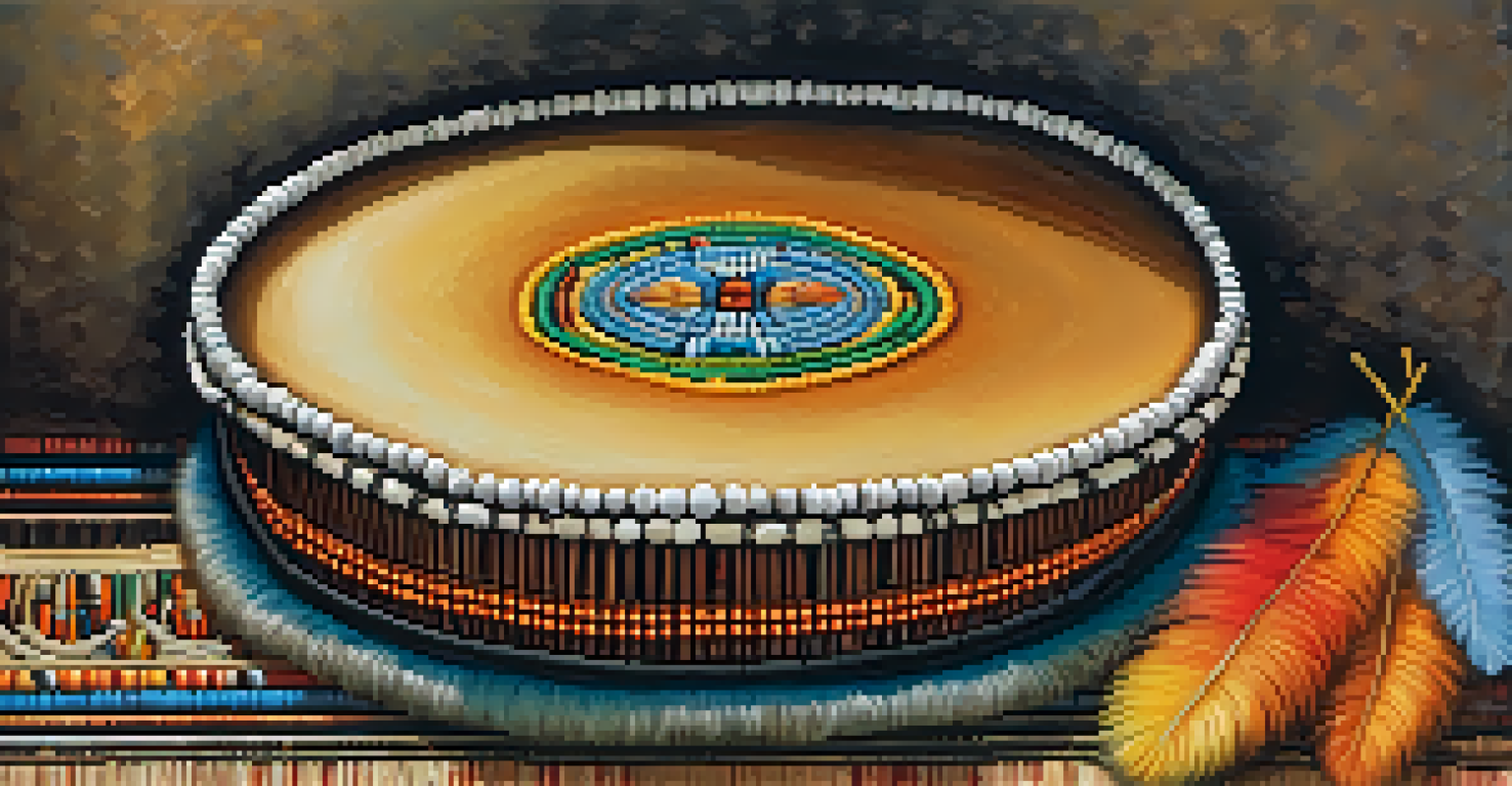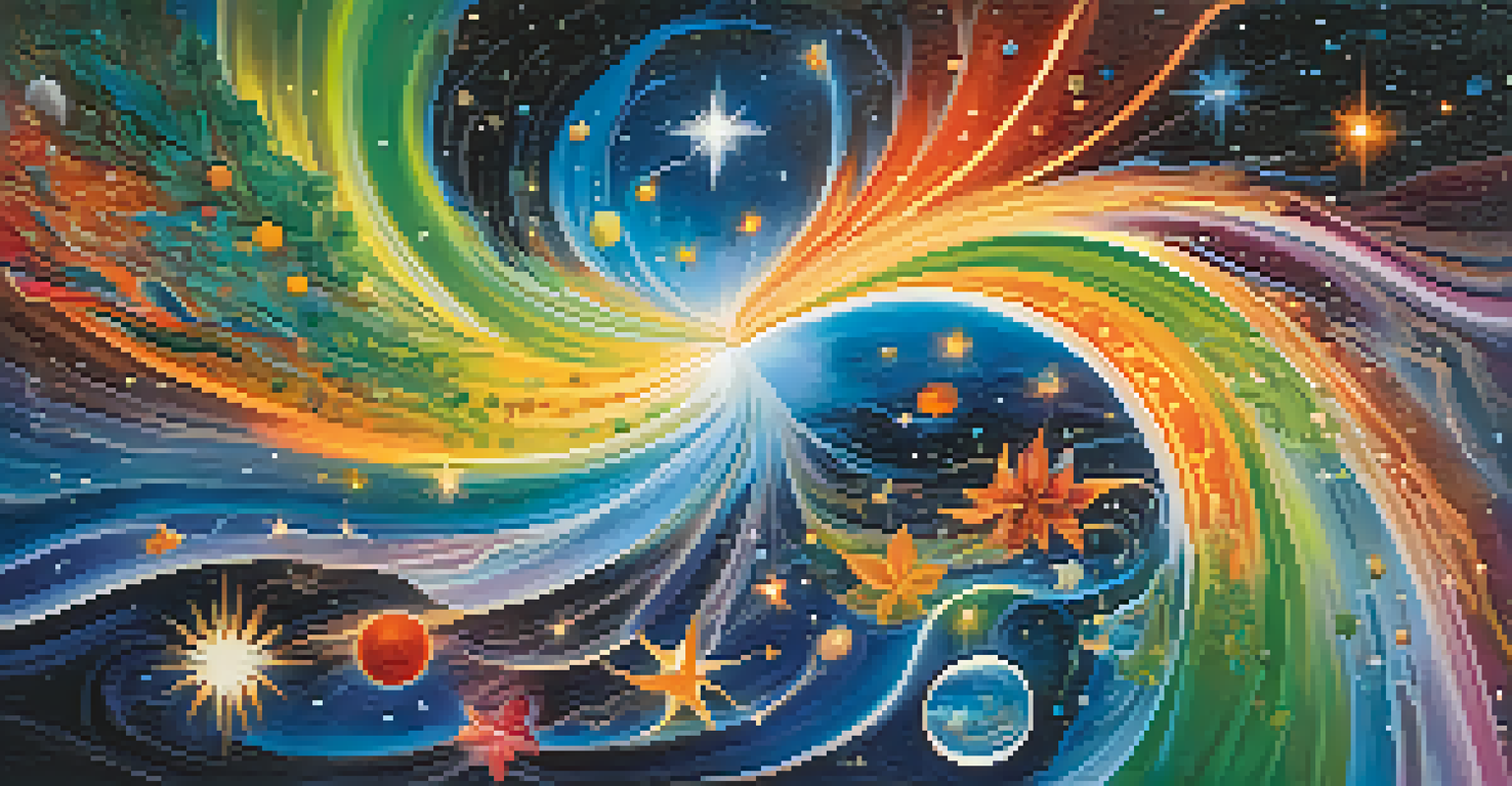Entheogenic Rituals: A Pathway to Enhanced Consciousness

Understanding Entheogens: A Brief Overview
Entheogens are substances that are often used in spiritual and religious rituals to create altered states of consciousness. Derived from the Greek words 'entheos' (meaning 'the divine within') and 'genes' (meaning 'generated by'), these substances have been part of human culture for centuries. Common examples include psilocybin mushrooms, ayahuasca, and peyote, each with its own unique properties and cultural significance.
The experience of entheogens is not merely a chemical reaction; it is a profound journey into the self, the universe, and the divine.
These substances are not just recreational; they serve a purpose in many indigenous traditions, acting as a bridge between the physical and spiritual worlds. In these contexts, entheogens can facilitate deep introspection, emotional healing, and a sense of connectedness to the universe. The experiences they induce can be transformative, often leading to profound insights and personal revelations.
Understanding the background and context of these substances is crucial, as it shapes how they are perceived and used. As we explore further, it becomes clear that the rituals surrounding entheogenic use play an essential role in enhancing consciousness and fostering community.
The Role of Ritual in Enhancing Experience
Rituals are structured, intentional practices that help create a sacred space for the exploration of consciousness. In the context of entheogenic use, rituals often involve preparation, guidance, and integration, ensuring that participants approach their experience with respect and intention. This structure can significantly enhance the effectiveness of the entheogenic experience.

For instance, a typical ritual might include meditation, prayers, or chants that set the tone for the journey ahead. Participants often report feeling a deeper connection to their guides and the universe when these practices are incorporated. This intentional approach can help mitigate fears and anxieties, allowing individuals to surrender to the experience more fully.
Entheogens Enhance Spiritual Connection
Entheogens facilitate deep introspection and emotional healing, acting as a bridge between the physical and spiritual worlds.
Moreover, rituals can foster a sense of community among participants, creating a supportive environment where individuals feel safe to share their experiences. This communal aspect can amplify the insights gained during these journeys, making the process of integration afterward much smoother and more meaningful.
Cultural Perspectives on Entheogenic Rituals
Different cultures have unique approaches to entheogenic rituals, each with its own historical and spiritual context. In many indigenous communities, these practices are viewed as sacred and are often conducted by experienced shamans or spiritual leaders. Such figures play an essential role in guiding participants through their experiences, ensuring safety and understanding.
Entheogens can help us confront our most deep-seated fears, and in doing so, they can lead us to a greater understanding of ourselves and our place in the universe.
For example, the use of ayahuasca in Amazonian tribes is not merely about consuming a substance; it's a holistic experience that includes music, storytelling, and communal support. These elements help participants navigate their journeys, fostering a deeper connection to their ancestors and the natural world. This contrasts sharply with Western approaches, which can sometimes lack the cultural depth and community support found in traditional practices.
Understanding these cultural perspectives can enrich our own experiences and respect for these rituals. It reminds us that entheogenic practices are not just about the substance itself but also about the cultural and spiritual frameworks that support them.
Benefits of Entheogenic Experiences
Engaging in entheogenic rituals can yield a plethora of benefits, both psychological and spiritual. Many participants report profound emotional healing, insights into their personal struggles, and a greater sense of purpose in life. These experiences can lead to significant shifts in perspective, allowing individuals to confront and work through long-held beliefs and traumas.
Research has shown that entheogens can facilitate neuroplasticity, the brain's ability to form new connections and pathways. This can be especially beneficial for those dealing with mental health issues such as depression or anxiety. The insights gained during these experiences often lead to lasting changes in behavior and thought patterns, promoting overall well-being.
Rituals Foster Safe Experiences
Structured rituals create a sacred environment that enhances the effectiveness of entheogenic experiences, promoting community and support.
Moreover, the sense of interconnectedness experienced during these rituals can foster compassion and empathy towards others. Participants often leave feeling more connected to their community and the world around them, encouraging a more harmonious existence.
Challenges and Risks Associated with Entheogenic Use
While entheogenic rituals can offer profound benefits, they are not without challenges and risks. For some individuals, the experience can be overwhelming or frightening, especially if they are unprepared for the intensity of their emotions. This underscores the importance of having a supportive environment and experienced guides during these journeys.
Additionally, not everyone is suited for entheogenic experiences. Individuals with certain mental health conditions, such as schizophrenia or bipolar disorder, may find that these substances exacerbate their symptoms. It’s crucial to approach this practice with caution and to consult with a healthcare professional if there are any concerns.
Ultimately, understanding these risks allows individuals to make informed decisions about their participation in entheogenic rituals. With proper preparation and guidance, many of these challenges can be mitigated, leading to safer and more rewarding experiences.
Integration: Making Sense of the Experience
Integration is a crucial step following an entheogenic experience, as it involves processing and making sense of what was encountered during the ritual. Without this step, the insights gained can fade, leading to confusion and frustration. Integration often includes journaling, therapy, or group discussions to help participants articulate their experiences and understand their significance.
Many find that sharing their experiences with others who have undergone similar journeys fosters a sense of belonging and validation. This community support can be vital in helping individuals navigate the sometimes challenging emotions that arise after the experience. It also reinforces the idea that they are not alone in their journey of self-discovery.
Integration is Key for Lasting Insights
Post-experience integration helps individuals process their journeys, ensuring that the insights gained continue to enrich their daily lives.
By prioritizing integration, participants can carry the lessons learned into their daily lives, ultimately enhancing their overall well-being. This ongoing process ensures that the insights gained during entheogenic rituals continue to inform and enrich their lives long after the experience has ended.
The Future of Entheogenic Practices in Society
As interest in entheogenic rituals grows, so too does the conversation around their place in modern society. Many are advocating for the decriminalization and medical use of these substances, highlighting their potential benefits for mental health treatment and spiritual growth. This shift in perspective could lead to a broader acceptance and understanding of entheogenic practices.
With the rise of research into psychedelics and their effects on the brain, more people are beginning to recognize the therapeutic potential of these substances. This could pave the way for more structured and regulated environments for their use, ensuring safety and efficacy for those seeking help or exploration.

However, it's essential to approach this shift with a sense of responsibility. As we embrace these practices, we must honor the traditions and cultures that have safeguarded this knowledge for centuries, ensuring that entheogenic rituals are practiced with respect and integrity.